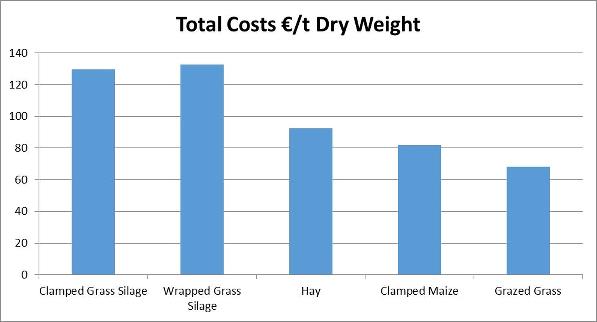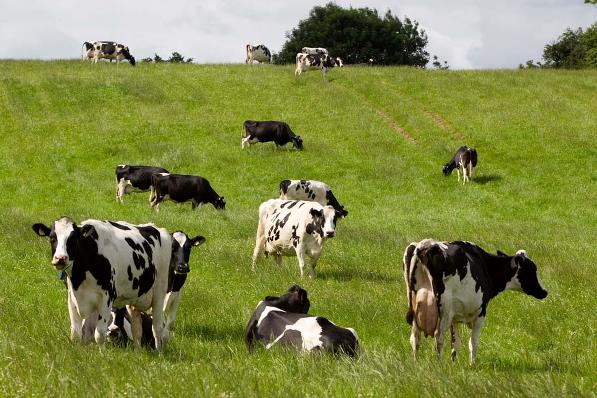Can you cut costs through better grazing management?
The answer, as field studies prove, is a definite 'yes'. We look at the pros and cons of different grazing systems and show you how to get the best from your grazing. Learn more…
Grazed grass: the cheapest feed on the farm
Numerous studies show that the cheapest and most efficient way to use your grass is to let your animals do the harvesting – by grazing. The table below comes from a study undertaken in the UK. It compares the costs of a range of forage options. Grazing is a clear winner.

Management tips to improve your grazing
Good grazing management takes time, but it's valuable work that easily repays the effort you put in. For beginners, this article is a great place to start.
Grass is nature's answer to the grazing habit. Most grasses have evolved to withstand grazing by locating their growth points at or near ground level. After defoliation, the growing points quickly spring into action. For a herdsman, the big challenge is to reduce the variability of growth and feed intake because they lead to variations in animal performance.
When grass growth is at its most vigorous, usually in the spring, a new leaf is produced every four to five days. At peak growth, a plant can replace all three leaves within two to three weeks. At the other end of the scale – in mid-winter when growth is at its slowest – it can take 30 days to produce one new leaf. The best time for grazing is when the plant is at the two-and-a-half-to-three-leaf stage.
The rate of growth depends on a range of factors including soil temperature, light, water, and nutrient availability. When managing grass it helps to know how much growth you can expect at different times of the year, e.g. <10kg DM/ha/d (dry matter per hectare per day) in winter or >40kg DM/ha/d in spring.
Use every blade for feed
Never let your grass go to waste. Full utilisation is the key to successful grassland farming. Your herd should turn every blade you grow into milk or meat.
Good grazing management maximises your utilisation. For example, if you can prevent plants reaching the fourth leaf stage and dying, you reduce wastage and the build-up of unproductive thatch at the base of the sward.

Monitor your sward heights
Monitoring sward height is a useful way to increase utilisation. It's all about comparisons – between the grass heights in several fields or between the heights in the same field over consecutive weeks. By plotting heights over time you see how your fields perform in comparison with each other – and then you can set yourself some sward-height targets.
There are no hard and fast rules for achieving your target heights. Every farm is different and, since weather is unpredictable, flexibility is key. A single strategy will not suit every farm. For example, you might practise set stocking with your cows and calves early in the year, then switch to a paddock system for your growing cattle. Maximising grassland production is a balance between utilisation, yield, and management input.
Grazing systems
|
Set stocking Animals have unrestricted access across a wide area throughout the grazing season. |
|
|
Pros |
Cons |
|
Low management input Low capital costs Can work well if sward-height targets are maintained |
Lower forage yield Can be difficult to maintain grass quality and an even sward height Uneven manure distribution Lower utilisation due to trampling Weeds can build up |
|
Rotational grazing Stock moves around a small number of fields – movements based on sward-height, grass-cover targets, or a fixed length of time in each field. |
|
|
Pros |
Cons |
|
Higher productivity than set stocking Allows the pasture to rest and regrow Can extend the grazing season More even manure distribution |
More fencing required and water provision increases cost Forage production and pasture utilisation are not optimal |
|
Paddock grazing Livestock moves frequently through a series of paddocks – movements based on measured grazing heights or grass covers. |
|
|
Pros |
Cons |
|
Highest forage production and use per ha Provides very high quality feed: 11–12ME Higher stocking rates can be sustained More even manure distribution Weeds can be controlled through grazing Reduced need for conserved forage by extending the grazing season |
Requires careful monitoring of forage supply Initial costs of fencing and water provision may be high More management intensive |
